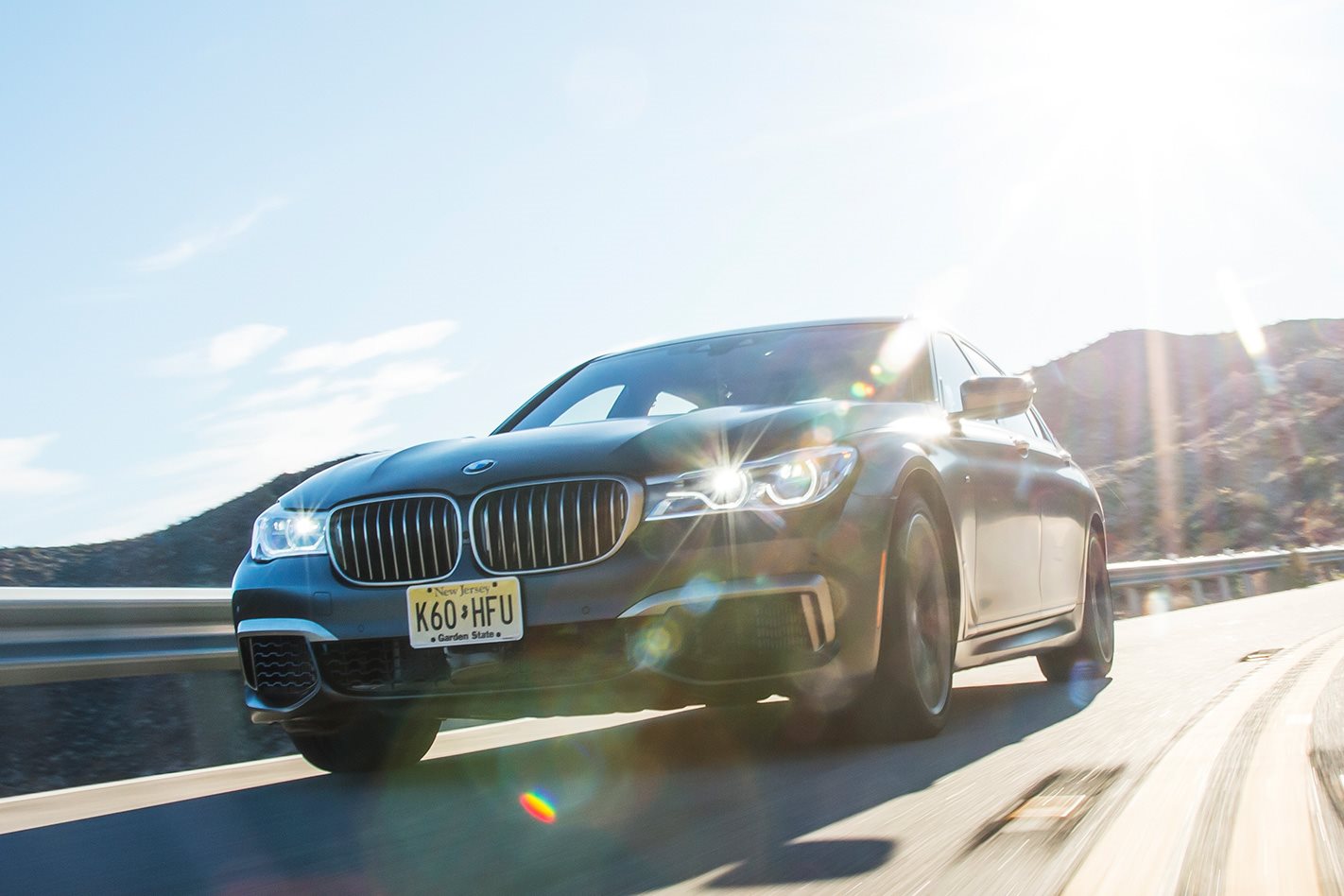Audi has the S8 and the S8 Plus, Mercedes-AMG offers the S63 and the even brawnier S65. Maserati weighs in with the powerful Quattroporte and Bentley is laying the finishing touches on the next Flying Spur. And now BMW also wants a share of the high-end, go-fast-in-total-comfort action.
Surely this means an M7 badge, right? Wrong. Just as Audi deems the RS8 badge a step too far, Munich’s new flagship instead carries the M760Li moniker.
“An M7 would not work in this essentially conservative segment,” claims Frank van Meel, head of the M division. “It’s almost impossible to find enough hardcore enthusiasts for an emphatically sporty, uncompromised, radically dynamic entry. That’s why we created the M760Li which aims to combine the best of both worlds.”
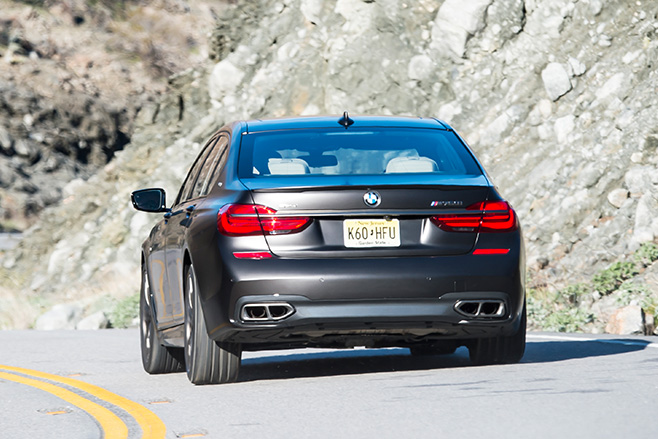
This wild beast, conceived within the skunkworks of the M division, weighs a substantial 2180kg, but counters that with an equally mammoth 6.6-litre, twin-turbo V12 packing 448kW/800Nm. Luckily, all-wheel drive harnesses all that oomph and rear-wheel steering subjectively shrinks the extended wheelbase and spices up turn-in at the same time. To keep the experience plush and 7 Series-esque, the package also includes air suspension, adaptive damping and active, electrically-operated anti-roll bars.
Getting the entire picture and fully comprehending the figures at play here is to understand that the M760Li is verging on supercar status – on paper, at least. Some thoroughbred sports cars would certainly pale with envy. With launch control activated, the would-be M7 gets to 100km/h from rest in just 3.7 seconds. Specify the M driving package and you can cruise at 305km/h instead of a mere 250km/h.
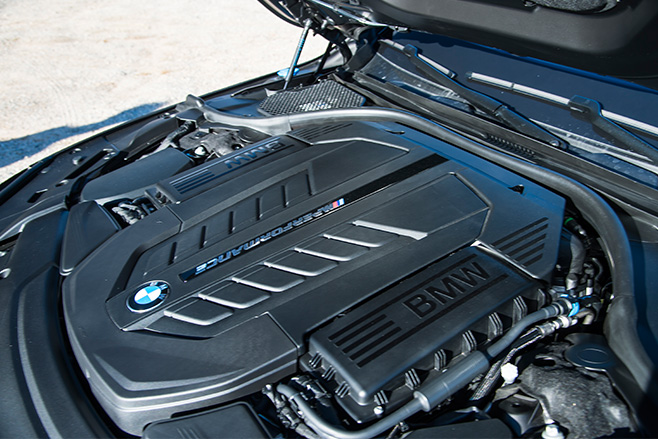
So the M part of the M760Li badge doesn’t look so out of place after all, however this model distorts the big picture even more when you remember that it’s primarily targeted at people who’ll sit in the back seat.
That is, image-greedy, chauffeur-driven customers with a penchant for opulence. Hence, sir/madam must have the classic M treatment, which looks funky and functional thanks to the wraparound aerodynamic kit and the bespoke 20-inch wheels, wrapped in 245/40 Michelin Pilot Sport tyres up front and even wider 275/35s at the back.
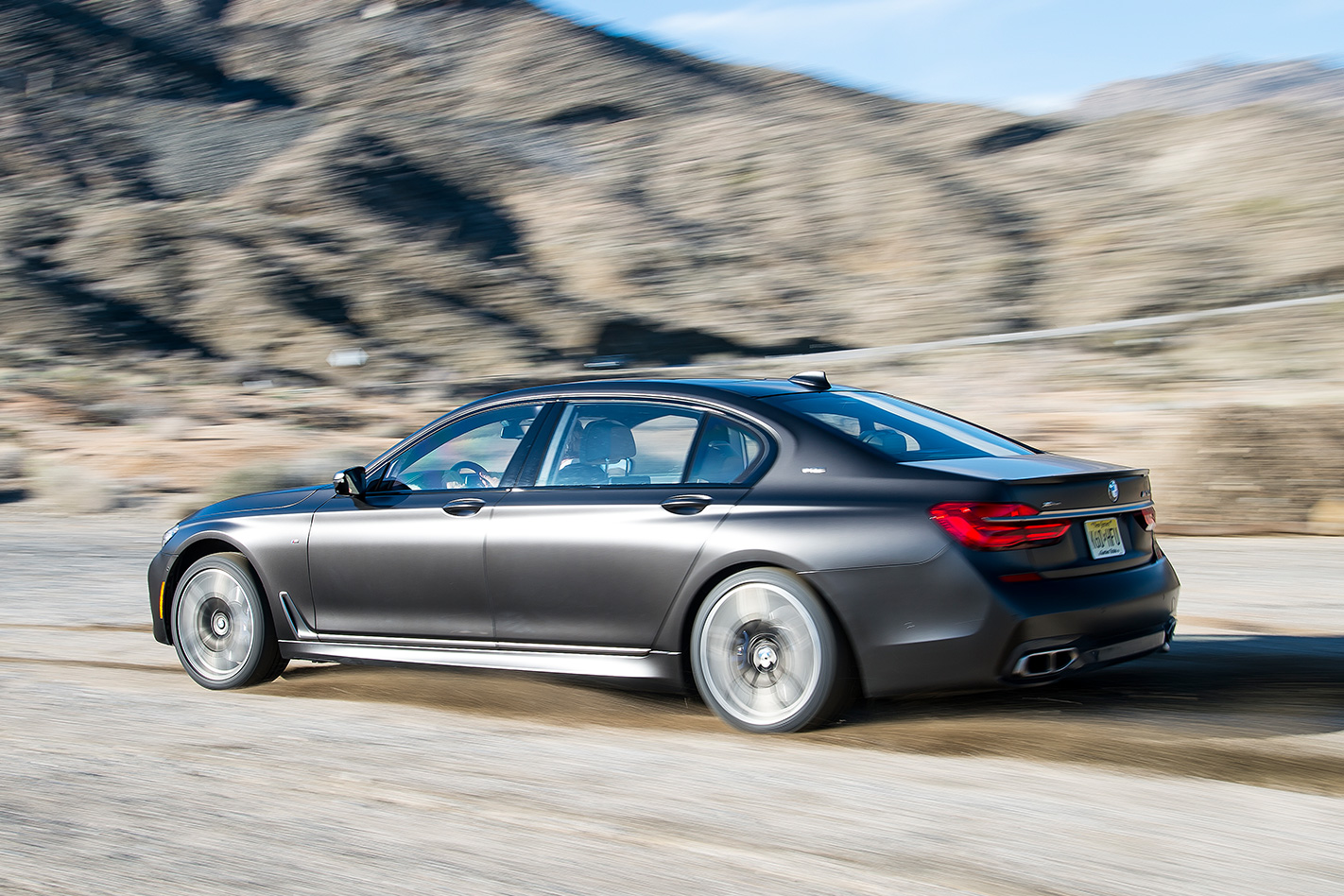
With former DTM champion Martin Tomcyk at the wheel of the pace car, our steed achieved remarkable tyre and brake degradation in no time. With so much weight, mass, momentum and ambition entering the equation, a first-class ticket straight to understeer city was the order of the day.
The nose-heavy V12 refuses to turn in on first attempt, but it’s something you deal with by taking it in your stride. Frivolity is electronically interrupted anyway by an overzealous stability control system. It can largely be avoided by opening up the steering and drip-feeding the masses of torque when on the limit of adhesion.
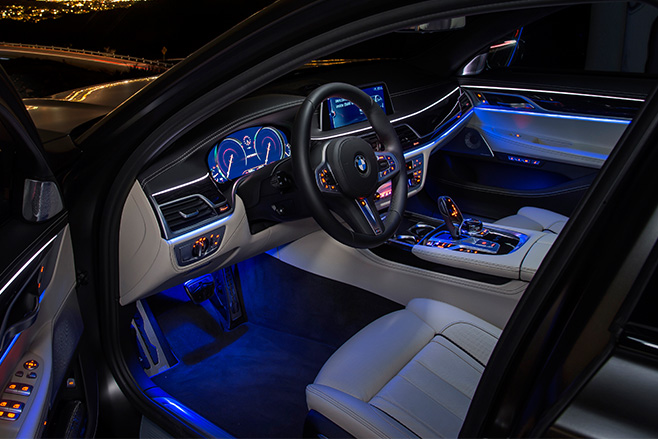
Basically, forget Comfort and Comfort Plus, except perhaps to tone down the dampers on truly rotten tarmac. Sport is clearly the preferred calibration; it warrants a meatier steering response and a livelier dialogue between the engine and transmission.
On this particular stretch of closed, skyward spiralling blacktop, the M760Li would likely eclipse its rivals in eight-out-of-10 disciplines. It is, for instance, more planted and focused than the S-Class twins from Affalterbach and its chassis is much more compliant than the unforgivably stiff S8.

Where the brakes have to be put on the praise is, ahem, in terms of brakes. On the second downhill run they start showing signs of distress, powdering the blue calipers with acid grey dust. Additionally, the overzealous stability control and the heavy demands of track work means the brakes exhaust early.
After merely three hot laps, effort increases notably and the pedal travel is a direct result of arresting the pace underfoot. All told, the stopping system does put on a brave face given the punishment being dished out.
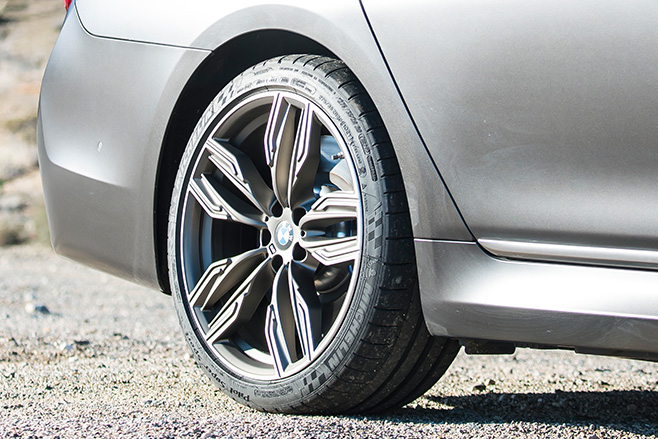
Despite certain, shall we say, idiosyncrasies, this BMW does win you over with its epic performance, riveting cornering grip and the intriguing handling. Nurse the front tyres and the latest would-be M-car will inspire and satisfy, challenge and reward while generally going through its motion with verve and sharpness. For a change, all those weighty, chassis-related trickeries suddenly make a lot of sense. Body roll is now merely a gesture, chuckability bonds with directional stability and the overt sure-footedness permits indecent cornering speeds.
Similar praise would apply to an identically prepped 750i – which is another way of saying that it’s primarily the charismatic V12 which lifts the M760Li above the rest of the range. The trick twin-turbo motor makes all the right noises, too, from a bass-heavy purr at idle to a full-bodied growl when approaching the 6000rpm cut-out. Thankfully, the M division spared us the chip-induced, brash acoustics with fake throttle blipping and computer-generated lift-off misfiring.

Not bad for what is essentially a revamp of an old engine, even if it must do without fancy e-chargers, 48-volt circuits, coasting functions and zero-emissions friendliness. The latter is also probably a good thing considering the claimed combined 12.6L/100km fuel consumption.
“BMW is one of the few manufacturers that still builds twelve-cylinder engines,” says van Meel. “With the 7 Series-based Alpina B7 covering the V8 side of the business, we took the V12 under our wings because of its awesome power and brand-shaping glory. You see, numbers aren’t everything in the ultra-luxury league. What matters every bit as much are the emotions triggered by this complex unit and the car it propels.”
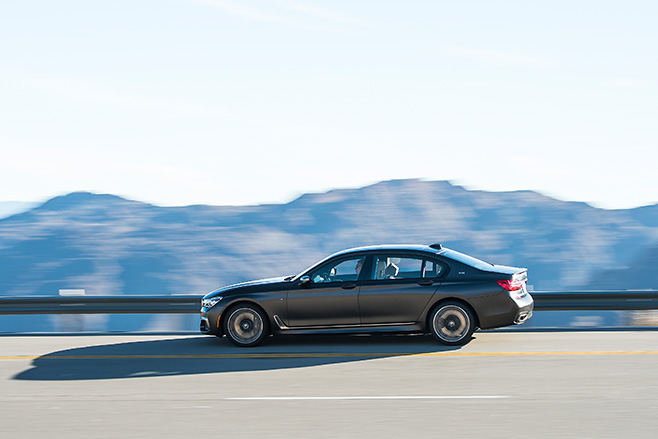
Overall, this is a car defined by marketing. It’s an impressively capable compromise and an intriguing breed of differing ideologies. Its strong dynamics, paired with commendable refinement, are the strength of this somewhat offbeat BMW. After all, you have to remember that this is a big car with staid looks, gentlemanly manners and more technological trickery than one can master.
Ultimately it misses M7 approval because its appearance is simply not special enough and its donor 7 Series DNA is conservative to its (carbon) core. Its trademark goals are, in part, compromised by the massive weight, ho-hum brakes and inherent preference for understeer, although the bonkers acceleration, seemingly mid-size-car agility in a full-size package and the thoroughly involving driving experience makes praise easy to dish out.
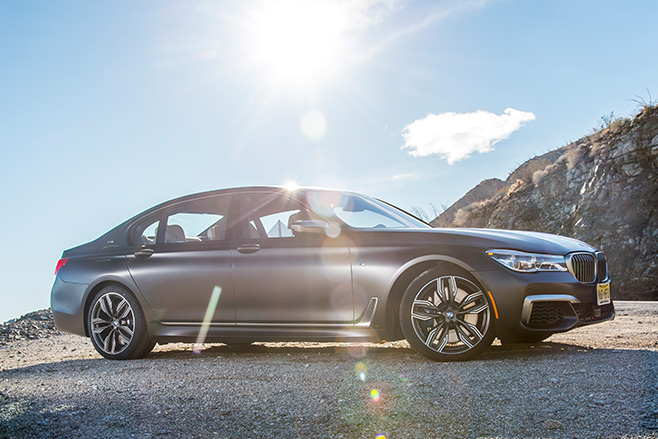
SPECS
Body: 4-door, 5-seat sedan Drive: all-wheel Engine: 6592cc V12, DOHC, 48v, twin-turbo Bore/stroke: 88.3 x 89.0mm Compression: 10.0:1 Power: 448kW @ 5500-6500rpm Torque: 800Nm @ 1550-5000rpm Power/weight: 206kW/tonne Transmission: 8-speed automatic Weight: 2180kg Suspension(F): A-arms, air springs, anti-roll bar Suspension(R): multi-links, air springs, anti-roll bar L/W/H: 5238/1902/1485mm Wheelbase: 3210mm Tracks: 1611/1640mm (f/r) Steering: electrically-assisted rack-and-pinion Brakes(F): 395mm ventilated discs, 4-piston calipers Brakes(R): 398mm ventilated discs, single-piston calipers Wheels: 20.0 x 8.5-inch (f), 20.0 x 10.0-inch (r) Tyre sizes: 245/40 ZR20 (f), 275/35 ZR20 (r) Tyre: Michelin Pilot Sport Price as tested: $419,000 Pros: Effortless performance; tech; handling Cons: Tame styling; weight, underdone brakes Star rating: 4/5

